Wine has been at the center of social gatherings globally for millennia.
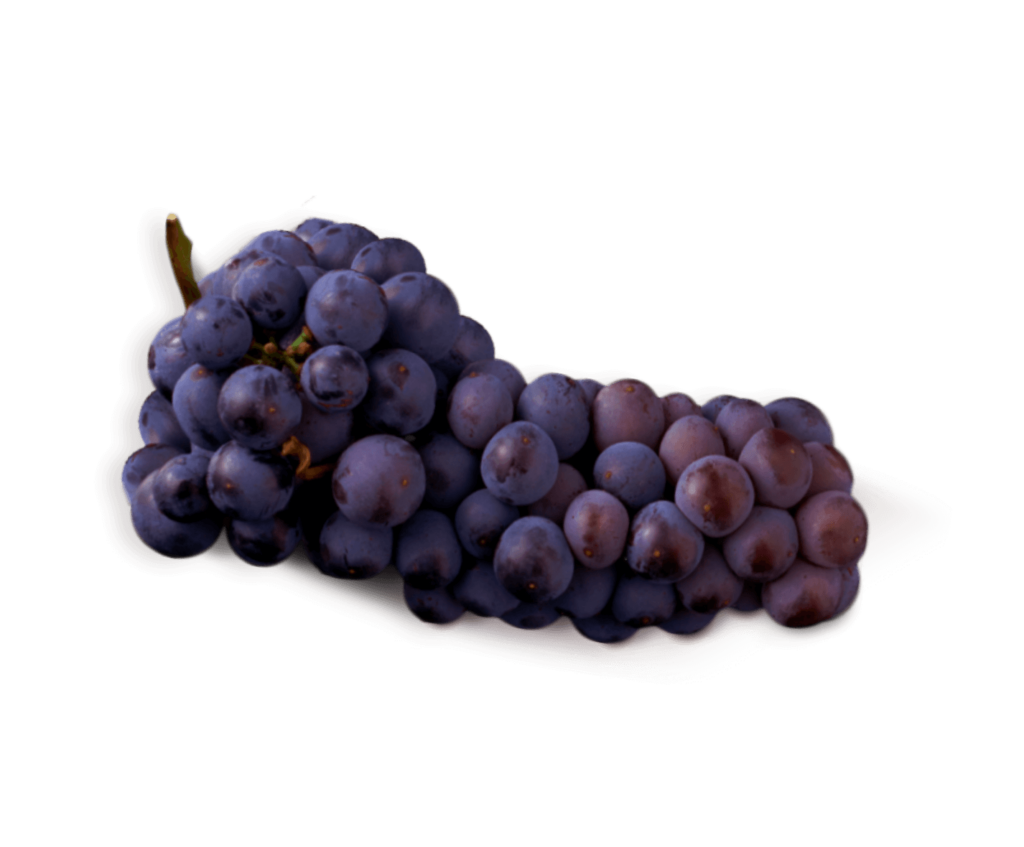
A Communal Tradition
This isn’t wine’s first rodeo. Wine has been a focal point in the social human fabric for nearly 8,000 years, and has been a part of milestone moments and cultural communal traditions in nearly every corner of the globe.
A Snapshot Of Past
Pours
6000 BC
Among The Earliest Of Georgian Traditions Is The Communal Supra, Or “Feast.”
Along with Turkey, Iran, Iraq, Armenia, and Azerbaijan, Georgia is one of the world’s earliest sites of grapevine domestication. Wine has been made there for more than 8,000 years. Among the earliest of Georgian traditions is the communal supra, or “feast.” The dishes served include prized ingredients such as walnuts, coriander, fenugreek, pomegranates, and marigold flowers. But what makes the supra distinctive and singular is the tamada, a sort of spiritual leader and toastmaster, who presides during the evening. Over the course of several hours of wine drinking and eating the tamada’s “job” is to make, and encourage others to make, emotional and philosophical toasts, starting with a toast to God, and moving on to toasts to friendship, to peace, to children and new life, to the elderly, to goodwill among men, and of course, to love.
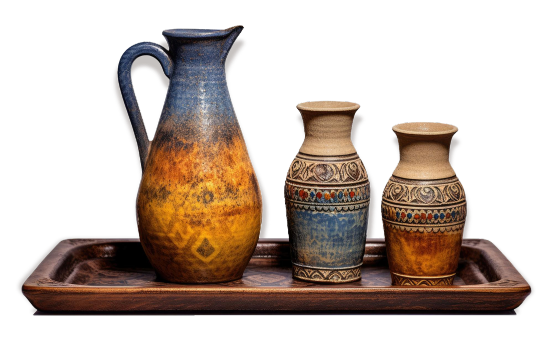

1100–146 BC/ 10-31 BC– AD 476
Wine And Food (And Its Role In Community Exchange) Was An Important Social Ritual In The Ancient Greek And Roman Worlds
While it was Socrates who declared that “wine moistens the soul,” wine consumption in the ancient worlds of philosophers and Plato was by no means known only to the celebrity set. The festive consumption of wine and food (and its role in community exchange) was an important social ritual in the ancient Greek and Roman worlds. While the Greeks often drank wine after the meal concluded as part of the post-meal conversation or “symposium,” Romans drank wine at the epulum (public feast), the cena (dinner, normally eaten in the mid-afternoon), and the comissatio (drinking party). It was also consumed more casually in community taverns or snack bars. Toasting was recorded as a popular activity in both cultures.
500-1500
Medieval Fairs, Merrymaking And Gathering Was Part Of The Fun
During the Middle Ages, Medieval fairs were big, open-air events held over 2-3 days, usually on a holiday or religious anniversary. While the main focus was trading goods at the market (with shops and stalls selling clothing, candles, soaps, jewelry, artwork, weapons, ceramics, leather goods, books, imported fruits), merrymaking and gathering was part of the fun. Stalls selling wine made domestically and abroad were on hand, as was mead. Also land owners of this time often had vineyards on their property but much of their estate wine went to the churches (where wine was also an important part of the ceremony).
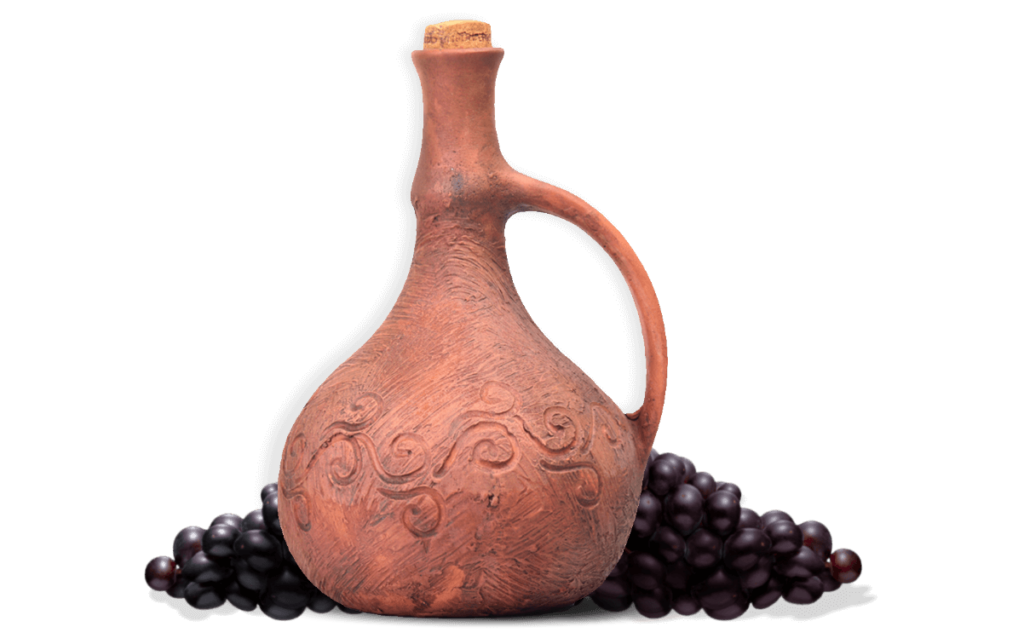

1700-1930
The Parisian “Salon”
The Parisian “salon” was popularized during the Enlightenment era when patrons of the arts or society hosts would open their doors to friends and interesting guests to debate philosophy, culture and creativity. Good wine and food flowed along with the conversation, inspiring many budget-minded artists to join in as much for the appreciation of the table as the talk (and share among their group whose parties were worth dropping in on). The trend continued through the 1920s, made famous globally by ex-pat writer Getrude Stein’s gatherings with writers like Sinclair Lewis, Ernest Hemingway and Ezra Pound.
The Origins Of Wine Production
From the earliest times, all over the world and even when no one knew it, alcohol was being made. Alcohol—the work of tiny yeasts feasting on the sugar in fruits and grains—is a phenomenon of nature. As far as we know, it’s never not been with us.
A Long History
Anthropologic evidence suggests that the intentional drinking of alcohol occurred in multiple places and over the entirety of human history.
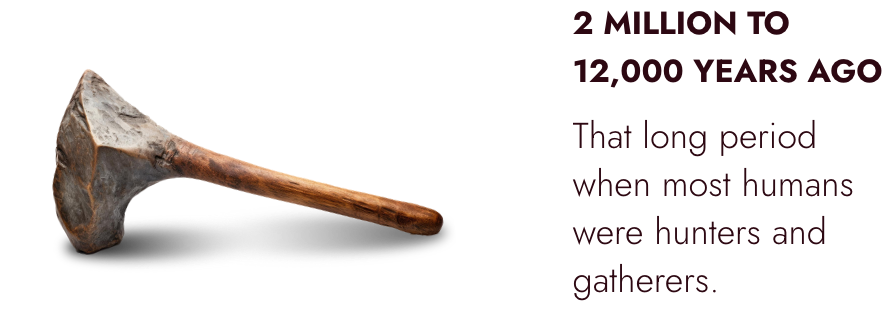
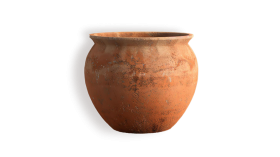
Of course, the alcoholic beverage our hominid ancestors drank wasn´t exactly wine, and even “drank” may not be the right word. What early humans discovered and consumed was something closer to a bubbling gruel that ingested, gave the eater a pleasantly euphoric feeling.
But from 2 million to 12,000 years ago-that long period when most humans were hunters and gathers -alcohol could only be happened upon, a lucky find in a day´s worth of searching for things to eat.
There are a few exceptions. Stone mortars carved into the floor of the Raqefet Cave in Mount Carmel, Israel, for example, suggest that a fermented alcoholic porridge was intentionally being made from wheat and/or barely as early as 13,000 years ago.
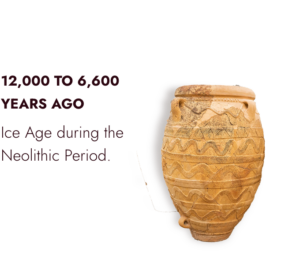
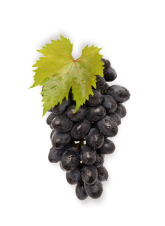
But the real momentum came at the end of the last Ice Age during the Neolithic Period, generally defined as 12,000 to 6,600 years ago, and one of the most revolutionary periods in history. It was during the Neolithic period, that humans learned to domesticate plants and animals, and this in turn led, for the first time, to settled life in villages (although some anthropologists argue that it might have been the other way around— settled life may have led to plant and animal domestication). The concomitant invention of pottery during the Neolithic period allowed humans to store foods, including grapes, in containers where they could be consumed later.
And where they could predictably ferment. Fermentation was the main method by which a Neolithic farmer could prevent a food from spoiling quickly since spoilage microbes can’t survive where alcohol is present.
The earliest finding of an alcoholic beverage made at least in part from grapes comes from the Neolithic village of Jiahu in the Yellow River Basin of Henan Province, China. Chemical analysis of residue inside pottery jars at the site show a fermented beverage made from rice, honey and fruit (grapes or hawthorn berries) as early as 9,000-7,500 years ago. The jars at the site had large round bodies, short necks, and small mouths, leading scientists to believe the jars were designed to be sealed, which in turn would have encouraged fermentation, and lead to a wine of sorts.
It’s not known if the people who lived at jiahu ever made their “wine” from grapes alone nor if the fruit they used was wild or domesticated, and yet they were an advanced and literate society. The excavation site also contained kilns, turquoise and jade carvings, stone tools, and flutes made from bone, the earliest evidence of musical instruments.
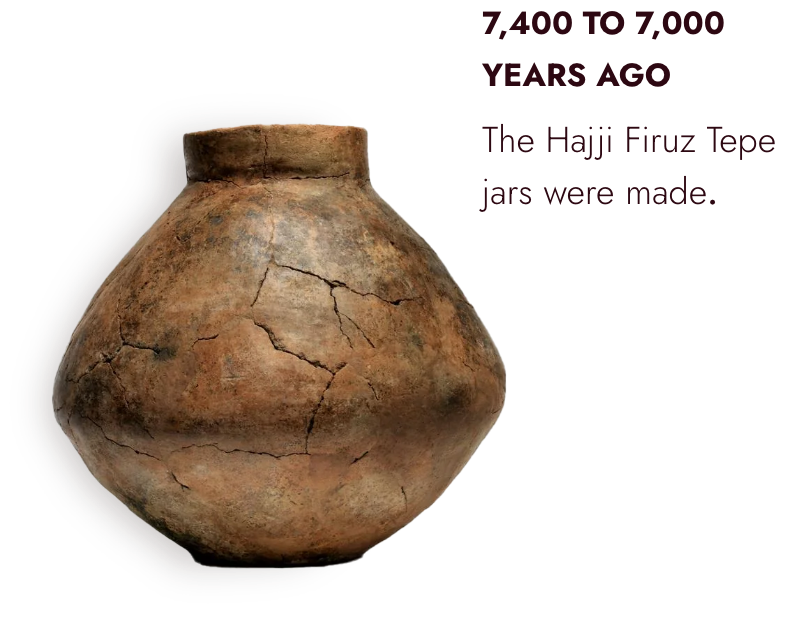
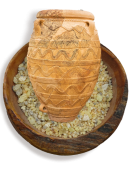
The next known link in wine’s story comes from the Zagros Mountains of Iran where jars unearthed at the excavation site Hajji Firuz Tepe were found to contain traces of tartaric acid, a biomarker for grapes and an almost sure sign that the liquid inside had been wine. The Hajji Firuz Tepe jars were made 7,400 to 7,000 years ago and curiously, they also contained traces of resin from terebinth trees, suggesting that a wine similar to Greek retsina may have been made. Adding resin to wine was an early method of attempting to preserve it, and a way of improving the flavor of a wine gone bad.
Were the makers of the jars at Hajji Firuz Tepe nomadic hunter gathers or had they begun to establish permanent settlements and perhaps even have grown grapes?
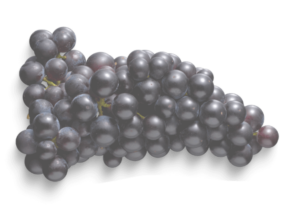
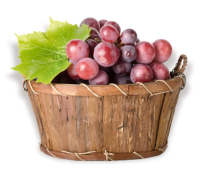
The first hard evidence of actual grapevine domestication occurs 8,000 to 6,000 years ago in what the geneticist José Vouillamoz calls “Grape’s Fertile Triangle” -an area that extended from the Taurus Mountains (eastern Turkey) to the northern Zagros Mountains (western Iran) to the Caucasus Mountains (Georgia, Armenia, and Azerbaijan). Vouillamoz’s “Grape Fertile Triangle” is partially within what archeologists call the Fertile Crescent-the ancient cradle of agriculture where the so-called “founder cereals” -einkorn wheat and rye, and legumes like chickpeas and lentils-were first cultivated. Interestingly, the Fertile Crescent is also where Indo European languages began, suggesting that language spread along with the domestication of crops including grapes.
Adapted from The Wine Bible, 3rd edition by Karen MacNeil (Workman Hachette Publishing 2022)
